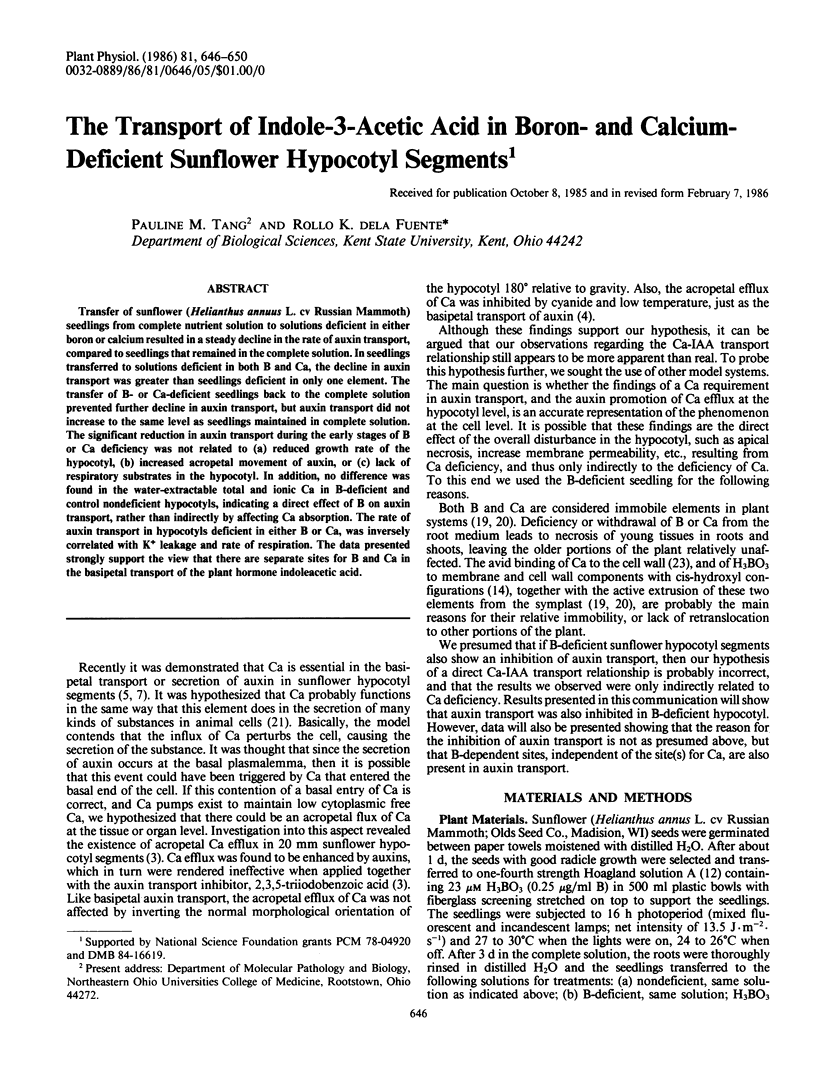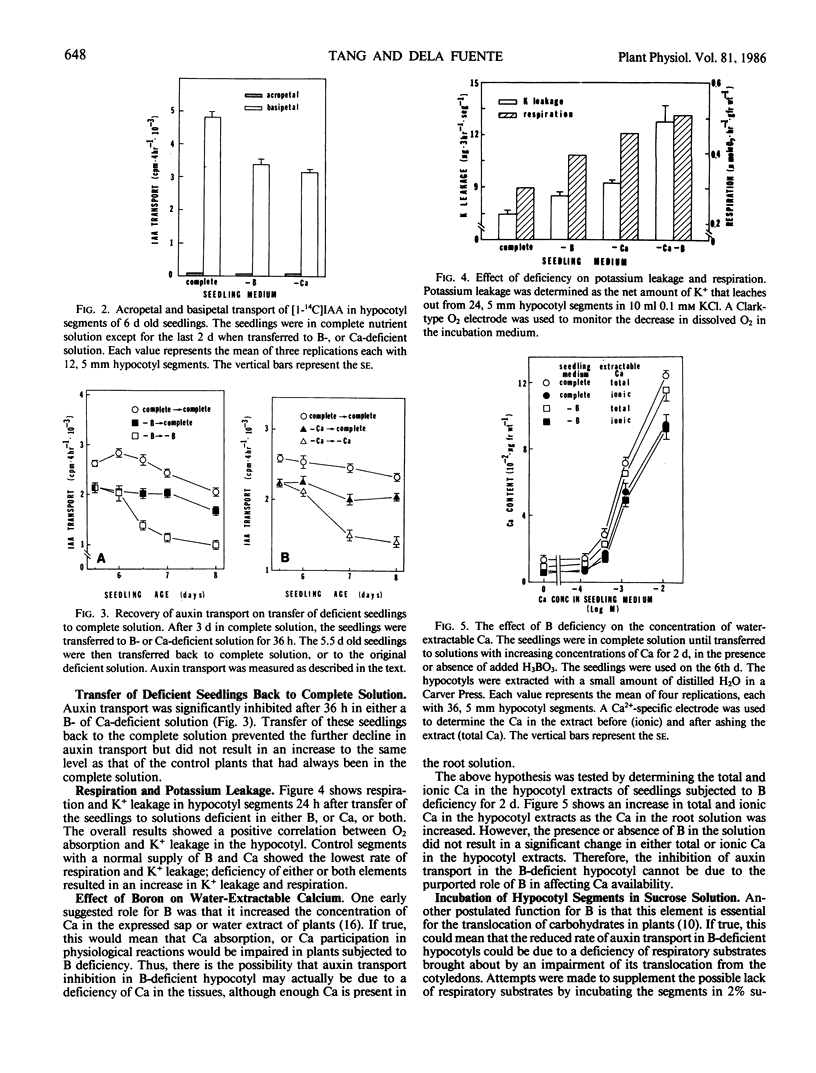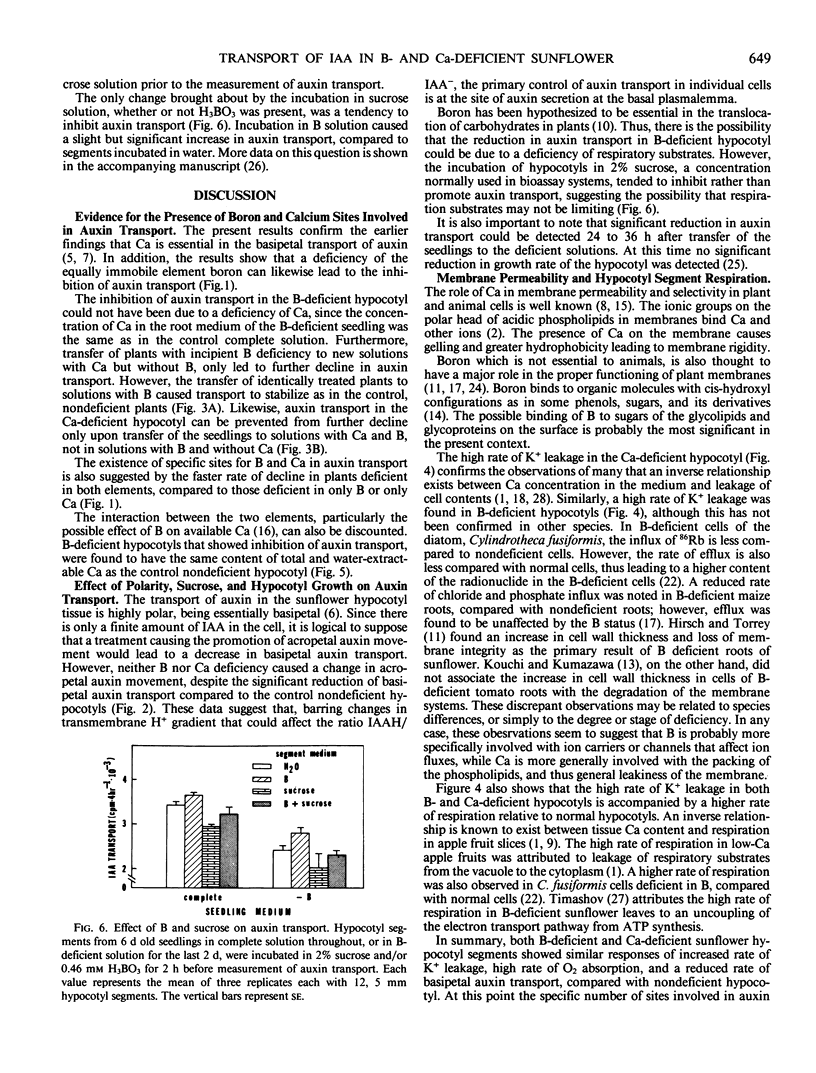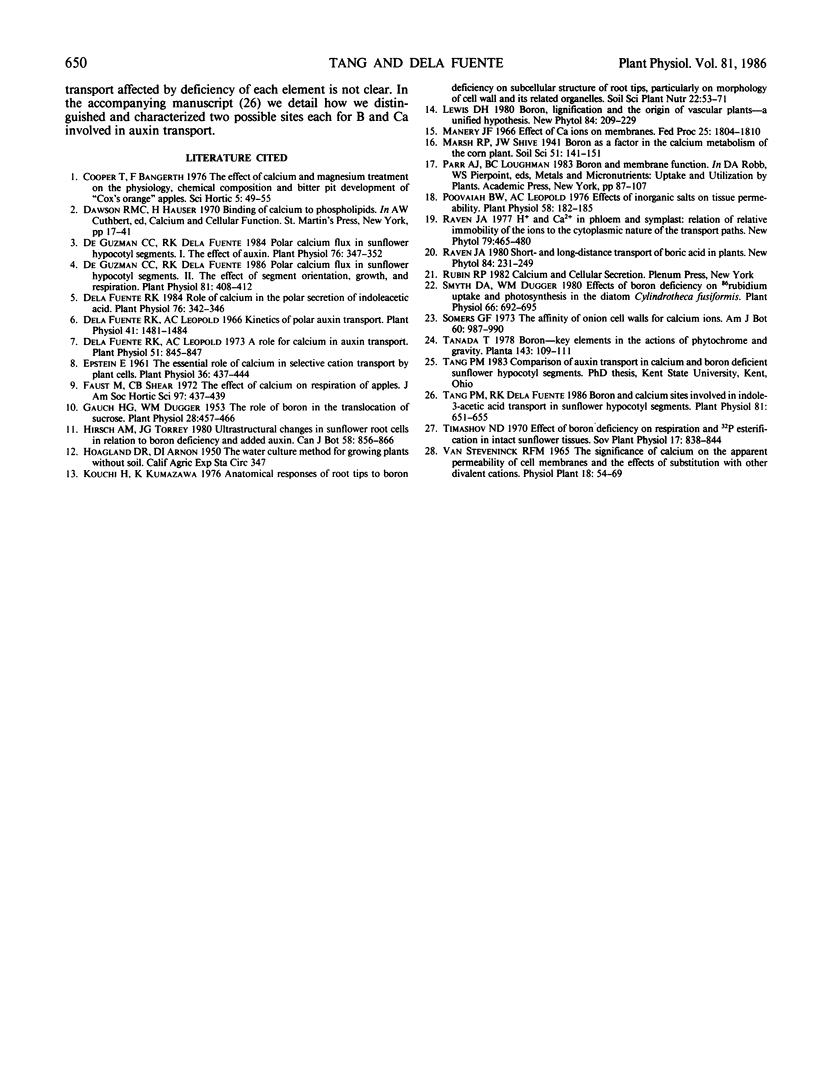Abstract
Transfer of sunflower (Helianthus annuus L. cv Russian Mammoth) seedlings from complete nutrient solution to solutions deficient in either boron or calcium resulted in a steady decline in the rate of auxin transport, compared to seedlings that remained in the complete solution. In seedlings transferred to solutions deficient in both B and Ca, the decline in auxin transport was greater than seedlings deficient in only one element. The transfer of B- or Ca-deficient seedlings back to the complete solution prevented further decline in auxin transport, but auxin transport did not increase to the same level as seedlings maintained in complete solution. The significant reduction in auxin transport during the early stages of B or Ca deficiency was not related to (a) reduced growth rate of the hypocotyl, (b) increased acropetal movement of auxin, or (c) lack of respiratory substrates in the hypocotyl. In addition, no difference was found in the water-extractable total and ionic Ca in B-deficient and control nondeficient hypocotyls, indicating a direct effect of B on auxin transport, rather than indirectly by affecting Ca absorption. The rate of auxin transport in hypocotyls deficient in either B or Ca, was inversely correlated with K+ leakage and rate of respiration. The data presented strongly support the view that there are separate sites for B and Ca in the basipetal transport of the plant hormone indoleacetic acid.
Full text
PDF




Selected References
These references are in PubMed. This may not be the complete list of references from this article.
- Dela Fuente R. K., Leopold A. C. A role for calcium in auxin transport. Plant Physiol. 1973 May;51(5):845–847. doi: 10.1104/pp.51.5.845. [DOI] [PMC free article] [PubMed] [Google Scholar]
- Dela Fuente R. K. Role of calcium in the polar secretion of indoleacetic Acid. Plant Physiol. 1984 Oct;76(2):342–346. doi: 10.1104/pp.76.2.342. [DOI] [PMC free article] [PubMed] [Google Scholar]
- Epstein E. The essential role of calcium in selective cation transport by plant cells. Plant Physiol. 1961 Jul;36(4):437–444. doi: 10.1104/pp.36.4.437. [DOI] [PMC free article] [PubMed] [Google Scholar]
- Gauch H. G., Dugger W. M. The Role of Boron in the Translocation of Sucrose. Plant Physiol. 1953 Jul;28(3):457–466. doi: 10.1104/pp.28.3.457. [DOI] [PMC free article] [PubMed] [Google Scholar]
- Manery J. F. Effects of Ca ions on membranes. Fed Proc. 1966 Nov-Dec;25(6):1804–1810. [PubMed] [Google Scholar]
- Poovaiah B. W., Leopold A. C. Effects of inorganic salts on tissue permeability. Plant Physiol. 1976 Aug;58(2):182–185. doi: 10.1104/pp.58.2.182. [DOI] [PMC free article] [PubMed] [Google Scholar]
- Smyth D. A., Dugger W. M. Effects of Boron Deficiency on Rubidium Uptake and Photosynthesis in the Diatom Cylindrotheca fusiformis. Plant Physiol. 1980 Oct;66(4):692–695. doi: 10.1104/pp.66.4.692. [DOI] [PMC free article] [PubMed] [Google Scholar]
- Tang P. M., Dela Fuente R. K. Boron and calcium sites involved in indole-3-acetic Acid transport in sunflower hypocotyl segments. Plant Physiol. 1986 Jun;81(2):651–655. doi: 10.1104/pp.81.2.651. [DOI] [PMC free article] [PubMed] [Google Scholar]
- de Guzman C. C., Dela Fuente R. K. Polar Calcium Flux in Sunflower Hypocotyl Segments : II. The Effect of Segment Orientation, Growth, and Respiration. Plant Physiol. 1986 Jun;81(2):408–412. doi: 10.1104/pp.81.2.408. [DOI] [PMC free article] [PubMed] [Google Scholar]
- de Guzman C. C., Dela Fuente R. K. Polar calcium flux in sunflower hypocotyl segments : I. The effect of auxin. Plant Physiol. 1984 Oct;76(2):347–352. doi: 10.1104/pp.76.2.347. [DOI] [PMC free article] [PubMed] [Google Scholar]
- de la Fuente R. K., Leopold A. C. Kinetics of polar auxin transport. Plant Physiol. 1966 Nov;41(9):1481–1484. doi: 10.1104/pp.41.9.1481. [DOI] [PMC free article] [PubMed] [Google Scholar]


